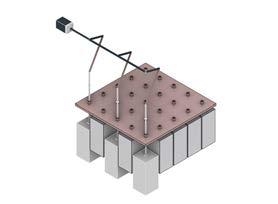
2 minute read
Cast Glass Restoration of Marble Monuments
from BT Bundle 2020
by RuMoer
Historical monuments are one of the best-preserved memories of our past as human species. Despite this, the conservation of these monuments is slowly being put under pressure by rapid economic development and the desire to make as much profit as possible. This development has raised awareness through the world of conservation about the importance of preserving and conserving our heritage. It is, however, hard to obey all the stated values and guidelines with existing materials and techniques. Many guidelines contradict each other, resulting in fierce debates about how monuments can be restored in the best and most appropriate way or whether they should not be preserved at all. Introducing cast glass as a new material into the field of reconstruction and conservation could bring the extremes of this ongoing debate closer together.
By introducing a transparent material, in the form of cast glass, it becomes possible to safeguard the structural and mechanical stability of marble monuments and simultaneously allow for observing both its original and damaged state. Moreover, with cast glass, it is possible to re-shape these missing elements of monumental structures very easily and its texture and transparency can be easily altered to give them either a fully transparent appearance or one that resembles of the original material. Exploded view of a, with cast glass restored, marble column In this research. the possibilities of using cast glass in restoration projects have been explored by creating a design and production line starting at the analysis of the case study and ending when the final piece is assembled. Using key conservation values like preserving authenticity, minimising visual impact and allowing for reversibility has resulted in a cast glass reconstruction design which is according to the conservation guidelines and feasible with the existing production methods of cast glass.
Advertisement
The development of new techniques in 3D scanning and additive manufactured moulds allows this process to become more time and cost-effective than currently used conventional methods. By scanning damaged surfaces of the monument in combination with the use of 3D printed sand moulds, glass can be easily cast into complex shapes to fill up the missing parts of the monument. The key to designing these glass shapes lies in understanding and respecting the monument’s structural and mechanical behaviour. If these characteristics are translated into the connections, shape and composition of the reconstructed cast glass elements, transparent restoration could become a serious contender for conventional materials
in the conservation of monuments.


Impression of cast glass restoration in the Parthenon with and without transparency.










